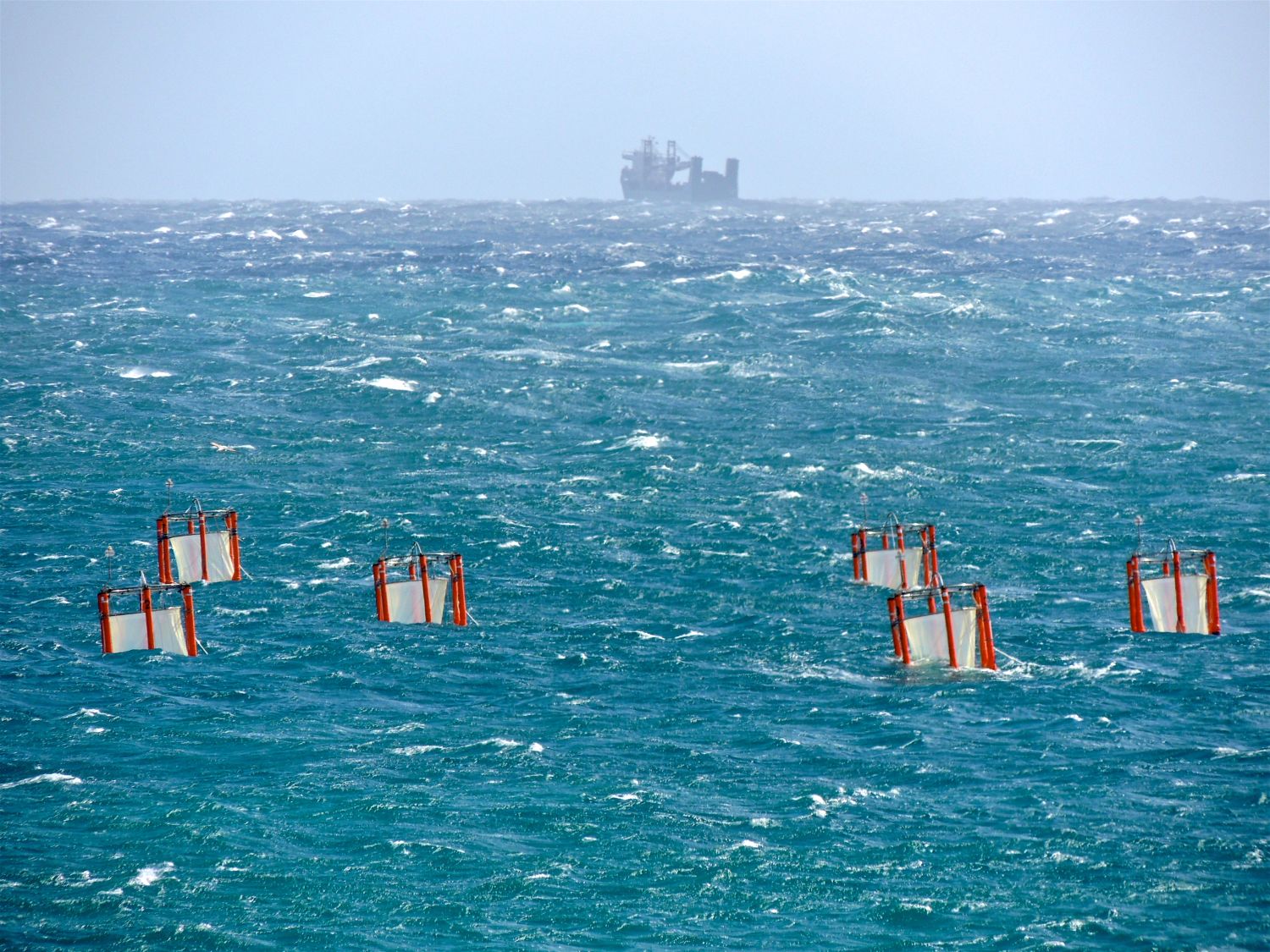Risks and side effects

A key objective of Ocean artUp is to assess the possible negative side effects of artificial upwelling. One potential risk is the stimulation of toxic algae through nutrient enrichment. In a KOSMOS mesocosm study here on Gran Canaria in 2014 at the same location and about the same time of the year we indeed observed a harmful algal bloom develop in our mesocosms. In that experiment we tested the impact of ocean acidification on plankton ecology and biogeochemistry and found that CO2-induced ocean acidification promoted the mass development of a toxic microalgae named Vicicitus globosus. Enhanced growth of this species was detected at CO2 concentrations above 600 ppm (parts per million), it’s mass development occurred at CO2 levels above 800 ppm. The results of this study were published in last week’s issue of Nature Climate Change.

The blooming of this toxic species had strong impacts on the plankton community. It prevented the development of the micro- and mesozooplankton communities and thereby disrupted the transfer of primary produced organic matter to higher trophic levels. It also prolonged the residence of particulate matter in the water column and caused a strong decline in export flux. Considering the wide geographical distribution of Vicicitus globosus and its confirmed role in fish kills, the proliferation of this species under the CO2 emission scenarios likely to occur during the course of this century poses an emergent threat to coastal communities, aquaculture and fisheries. Another strong argument to drastically and rapidly reduce CO2 emission and prevent further ocean acidification.
Neither Vicicitus globosus nor any other toxic species thrived in our present mesocosm study. Although nutrient-rich deep water also carries elevated CO2 concentrations from the remineralisation of organic matter at depth, mixing those deep waters into the surface layer yields CO2 levels much below those expected from continued ocean acidification. On top of that, slightly elevated CO2 levels are rather short-term, because the enhanced algal growth stimulated by the upwelled nutrients quickly consumes the extra CO2 via photosynthesis. So based on the results of this study, there is no indication that artificial upwelling promotes the development of harmful algal species. Whether this holds true for different plankton communities and under different environmental conditions remains to be seen in future studies on artificial upwelling.
